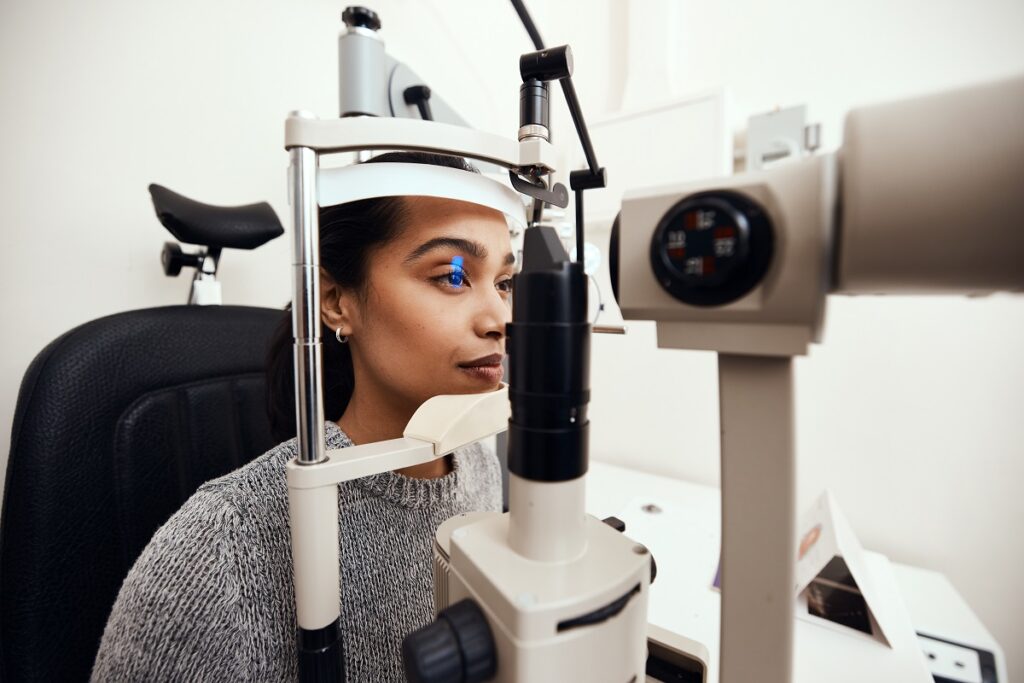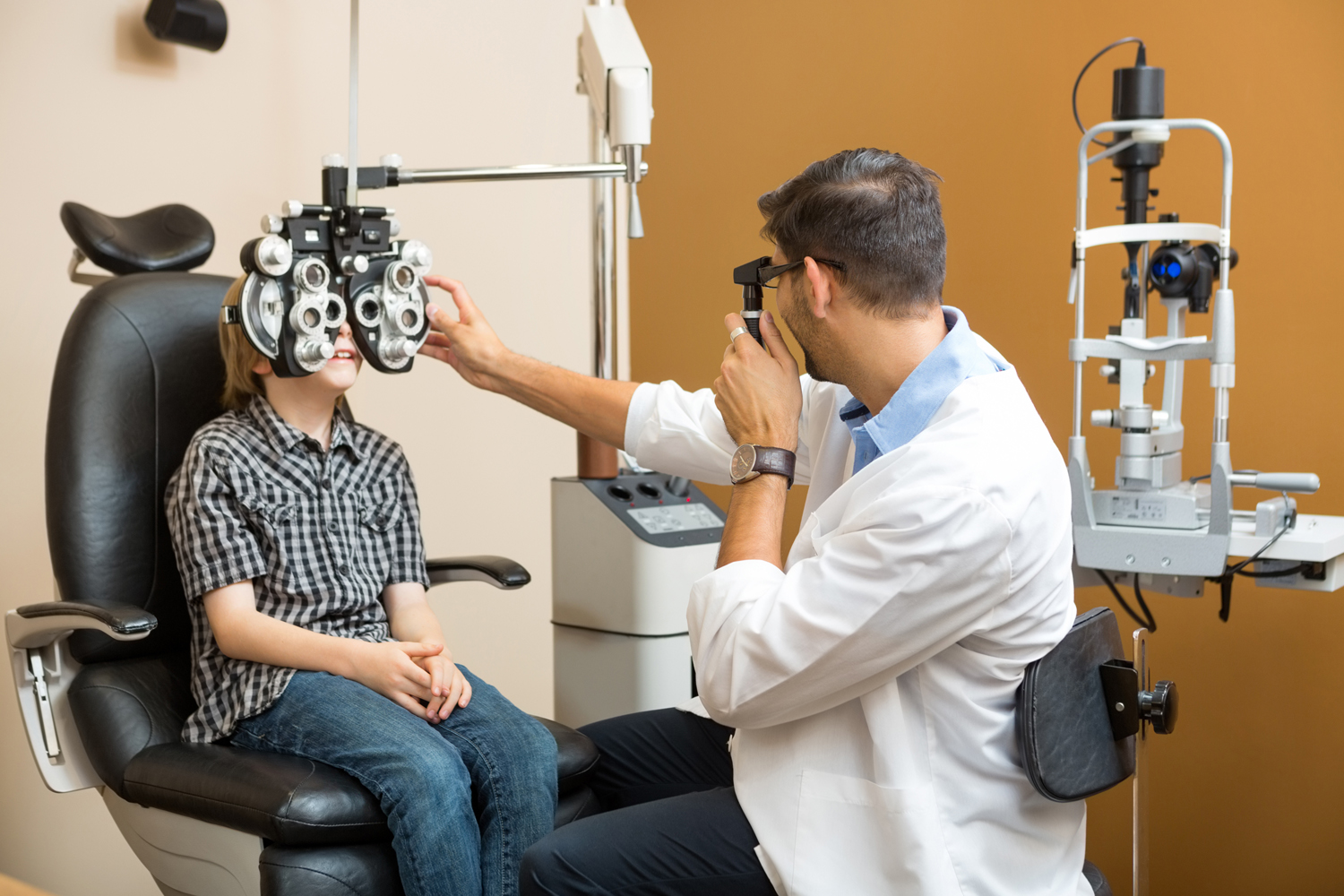Experience Personalized Care with Opticore Optometry in Chino
Experience Personalized Care with Opticore Optometry in Chino
Blog Article
Discovering the current Technical Improvements in Optometry and What They Mean for Optometrists
In the ever-evolving field of optometry, current technological advancements are improving exactly how specialists come close to eye care. From the accuracy of Optical Comprehensibility Tomography to the nuanced insights offered by AI-driven analysis tools, these innovations are establishing new criteria in person evaluation and therapy. Teleoptometry is poised to redefine accessibility, making sure that experience goes beyond geographical limitations. As these advancements penetrate the practice, optometrists are confronted with the challenge of accepting these tools to enhance person results. The concern stays: exactly how will these technical shifts redefine the functions and obligations within the career?
Advancements in Diagnostic Devices
Advancing the area of optometry, advancements in diagnostic devices have actually reinvented the method eye care professionals assess and detect eye conditions and aesthetic impairments. The previous decade has actually observed substantial technological advancements, making it possible for even more precise and extensive examinations.
Another secret innovation is the intro of innovative corneal topography systems, which map the surface curvature of the cornea with accuracy. These devices are especially beneficial for fitting call lenses and diagnosing corneal conditions. In addition, digital retinal imaging has actually changed conventional ophthalmoscopy, using detailed, panoramic sights of the retina that promote comprehensive visual exams.
The advancement of wavefront aberrometry has actually also been vital, making it possible for the analysis of refractive errors with unrivaled accuracy (Opticore Optometry). This modern technology aids in tailoring corrective lenses and enhancing surgical outcomes for refractive surgeries. Collectively, these analysis advancements empower optometrists to deliver superior patient care, ensuring very early treatment and customized therapy methods, eventually enhancing visual health outcomes
AI in Patient Monitoring
Structure on the structure of sophisticated analysis tools, the incorporation of expert system (AI) in person monitoring stands for a transformative jump for optometry. AI systems are progressively utilized to enhance performance, precision, and personalization in patient treatment. By examining huge amounts of data, AI can identify patterns and forecast prospective ocular problems, making it possible for optometrists to tailor interventions much more successfully. This capacity is critical in handling chronic eye conditions such as glaucoma and diabetic retinopathy, where early discovery and continuous surveillance are crucial.
Furthermore, AI-driven systems help with structured client communications and administrative procedures. Automated organizing, online consultations, and customized follow-up strategies not just improve individual fulfillment but likewise optimize time administration for experts. These systems can triage patients based on the necessity of their conditions, making certain that those in crucial requirement get prompt interest.
Furthermore, AI improves decision-making by providing eye doctors with evidence-based recommendations and therapy pathways. By integrating data from electronic health documents, AI tools use understandings that inform professional choices, decreasing the danger of mistakes and boosting patient results. As AI proceeds to advance, its duty in patient management will likely expand, improving the landscape of optometric care.
Advancements in Retinal Imaging
In the world of optometry, retinal imaging has actually experienced amazing technological advancements that are boosting analysis abilities and client treatment. Innovations such as Optical Comprehensibility Tomography (OCT) and fundus digital photography have revolutionized just how eye doctors imagine and evaluate the retina.
Improved imaging click here for more info modalities like OCT angiography are more refining diagnostic precision. This non-invasive method maps blood flow in the retina, supplying important insights right into vascular health and wellness without the need for dye injections. Furthermore, adaptive optics modern technology is being integrated right into retinal imaging systems to fix eye aberrations, providing unprecedented photo clarity. Such innovations assist in the identification of min retinal changes that might signify condition progression.
In addition, innovations in artificial intelligence are boosting retinal imaging by allowing computerized evaluation of huge datasets. These systems aid optometrists in recognizing useful link patterns indicative of pathology, consequently boosting analysis accuracy and efficiency. Collectively, these advancements are transforming retinal imaging right into a cornerstone of contemporary eye care, boosting outcomes and broadening restorative possibilities.
Teleoptometry's Growing Role
Teleoptometry is progressively becoming a vital element of eye treatment, driven by innovations in electronic interaction and analysis devices. As optometry welcomes electronic improvement, teleoptometry assists in remote consultations, allowing optometrists to prolong their services beyond conventional limits. This is especially valuable in underserved and country locations where access to specialized eye care is frequently limited. By leveraging high-resolution video conferencing and progressed retinal imaging, eye doctors can carry out detailed eye examinations from afar, guaranteeing timely diagnosis and therapy.
The integration of synthetic intelligence (AI) more enhances teleoptometry, allowing the analysis of aesthetic data and assisting in the discovery of eye problems such as glaucoma and diabetic retinopathy. AI-powered formulas can rapidly translate complex imaging information, supplying optometrists with beneficial understandings that reinforce clinical decision-making.
Additionally, teleoptometry sustains connection of care via seamless assimilation with electronic health documents (EHRs), allowing optometrists to preserve extensive client backgrounds. This ensures that people receive personalized and constant treatment even when speaking with different professionals.
Despite these advantages, obstacles remain, including making certain information safety and security and handling person expectations. Nonetheless, teleoptometry stands for a significant stride towards more available, effective, and patient-centered eye care. As innovation advances, its duty is positioned to broaden better.

Future Fads in Eye Treatment
A myriad of cutting-edge fads is readied to reshape the future of eye care, driven by technical innovations and the evolving requirements of clients. One considerable trend is the integration of man-made knowledge (AI) in diagnostics, which guarantees to enhance the accuracy and effectiveness of eye exams. AI formulas can analyze large amounts of data from retinal images, possibly identifying conditions like diabetic person retinopathy and glaucoma earlier than standard techniques.
Furthermore, individualized medicine is gaining grip in optometry, with genetic screening notifying why not find out more tailored therapy plans. This technique aims to optimize person results by customizing treatments to private genetic accounts. Wearable technology, such as wise contact lenses, is also imminent, providing real-time tracking of intraocular stress or glucose degrees, thus giving constant insights into eye and systemic health and wellness.
The adoption of enhanced fact (AR) and online reality (VIRTUAL REALITY) in training and client education and learning is another arising pattern. These technologies use immersive experiences that can enhance understanding and skills both for optometrists and individuals. As these fads progress, optometrists need to remain abreast of technological developments to provide cutting-edge care, making sure improved person outcomes and contentment in the dynamic landscape of eye care.
Verdict

Jointly, these analysis innovations encourage eye doctors to supply exceptional client care, making sure very early treatment and customized therapy approaches, ultimately boosting aesthetic health and wellness outcomes.

As these technologies continue to progress, optometrists need to adjust and incorporate them into method, inevitably optimizing workflow effectiveness and boosting the criterion of eye care delivered to clients.
Report this page